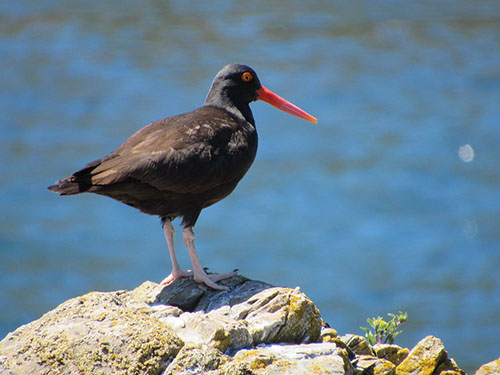Thursday, November 17, 5:30 – 7:30 p.m., Orcas Center
— from Russel Barsh —
 Indian Island is beginning to show the effects of increasing tourist traffic and climate change. That is the message that Kwiaht and the Indian Island Marine Health Observatory will share with the community at the seventh annual Celebrate Indian Island event at Orcas Center on November 17, from 5:30 to 7:30 pm. The evening includes displays and presentations by scientists, volunteers and students, and a light buffet provided by the Orcas Village Store with Island Hoppin’ beer. Admission is free.
Indian Island is beginning to show the effects of increasing tourist traffic and climate change. That is the message that Kwiaht and the Indian Island Marine Health Observatory will share with the community at the seventh annual Celebrate Indian Island event at Orcas Center on November 17, from 5:30 to 7:30 pm. The evening includes displays and presentations by scientists, volunteers and students, and a light buffet provided by the Orcas Village Store with Island Hoppin’ beer. Admission is free.
“It’s not all bad news,” says Kwiaht director Russel Barsh, who will present eight years of marine monitoring data at the event. “The trend for eelgrass, many sea stars and intertidal crabs is down, while we are seeing a shifting mix of fish and clam species rather than a decline.”
Although Indian Island’s Ochre Stars have recovered from an outbreak of wasting syndrome in 2014, their numbers remain at about half of their pre-2014 levels, and most other sea star species have disappeared. The pattern is consistent with a response to warmer water. Only Ochre Stars are adapted to spending much time out of the water, and even they have been retreating more and more below the tides to avoid the summer heat, Barsh says. Warmer summers are likely to affect all of the other animals that live between the tides exposed on the beach, beneath rocks, or in shallow tide pools.
Both inter-tidal crabs and sea stars may also be affected by more visitors walking through beach and tide pool areas and turning over rocks. “We are seeing fewer and fewer animals under the smaller intertidal rocks,” Barsh says, “and this last summer, visitors began turning over the big rocks too.”
The Flattop Porcelain Crab, which is the “mascot” of the Indian Island stewardship program, is known to be particularly sensitive to silty runoff. Eelgrass can be affected by silty street runoff, too, Barsh explains; silty water filters out some of the sunlight that eelgrass needs for photosynthesis. The decline of subtidal as well as intertidal eelgrass suggests that silt is at least as big a factor as trampling or warming.
If there is a success story to be found at Indian Island, Barsh maintains that it is the recovery of wildflowers, oaks and nesting birds on the vegetated upland where volunteers marked out a “Driftwood Trail” to divert hikers from sensitive meadows and discouraged hiking during the nesting season. Many birds nested successfully on the island this year including Black Oystercatchers, Killdeer, White-Crowned Sparrows, and Rough-Winged Swallows. Wildflowers such as Camas, Chocolate Lily, and Sea Blush have reappeared in parts of the island that were mostly bare earth when the volunteer stewardship program began in 2009.
“All in all,” Barsh maintains, “the island is still diverse and resilient, and with sound stewardship it can continue to rebound and flourish for the education and enjoyment of islanders and visitors alike.”
For further information please contact: exploreindianisland@gmail.com.
**If you are reading theOrcasonian for free, thank your fellow islanders. If you would like to support theOrcasonian CLICK HERE to set your modestly-priced, voluntary subscription. Otherwise, no worries; we’re happy to share with you.**







